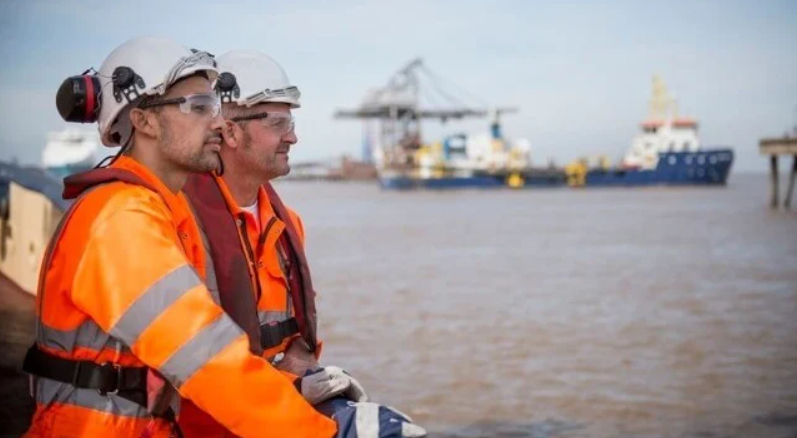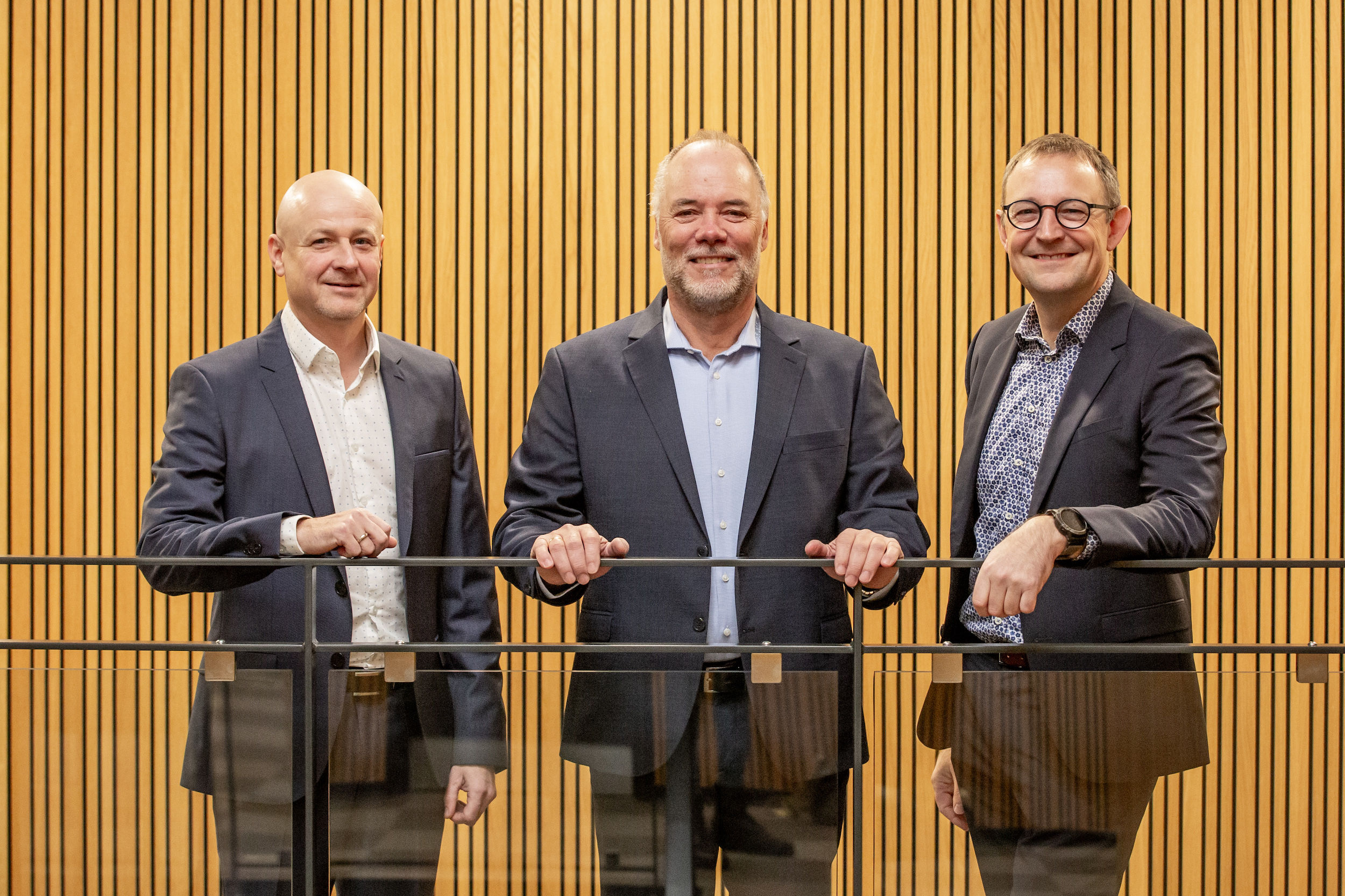The ships feature Wärtsilä’s fully integrated hybrid solution, enabling the vessels to enter and leave harbour, and perform cargo operations, with zero emissions
Core breakthrough components in Yaskawa Environmental Energy /
The Switch’s DC-Hub offering are our Electronic DC Breaker (EDCB) and Electronic Bus Link (EBL). Both devices serve to guarantee selectivity and safety through ultra-rapid fault detection and disconnection, ensuring complete redundancy in DC power distribution for fully electric and hybrid vessels.
The EDCB and EBL are now standard building blocks in our marine drive offering, enabling our DC-Hubs to perform at the highest standards of efficiency and reliability.
“With microsecond range response, both devices provide maximum system protection and ride-through capability,” says Head of Product Line High Power Converters, Teemu Heikkilä.
Protection on the inside
The EDCB is integrated within inverter modules inside the DC-Hub, increasing redundancy within the hub by detecting, cutting, and disconnecting any critical fault in 10 microseconds. That is much faster than the millisecond range response of a conventional fuse. Selectivity reduces fault duration and isolates any damaging effect to just the affected module, ensuring the least possible energy disruption.
“As well as protecting against inverter module failure towards DC links, the EDCB also dampens oscillations towards DC links by dedicated inductance in a series of active components.
The EDCB allows each module to work independently and also facilitates charging, as you can charge the inverter module capacitor through it with no need for any other device.
It makes the system solution much simpler with fewer components and connections,” says Heikkilä.
The EDCB provides complete protection with ride-through capability. The risk with using conventional fuses in DC set-ups, which is mostly still the case, is that the entire DC link and associated functions will trip if the fuse goes. “With EDCB, the DC link will not drop in voltage, and the power will stay on, keeping the ship running,” says Heikkilä.

Unique in the market
To Heikkilä’s knowledge, there is no competing solution in the market. Fuses are the competition. “Fuses are fine for AC systems, but with the move to DC distribution, things are very different. Unlike in AC systems, the fault current in DC distribution does not have zero crossing, so protection devices need to perform at a whole new level.
Our concept is based on semiconductors and fast current measurement. In other words, it is a measured data-based fast and predictable protection,” he says.
EDCB technology can be utilized in other applications, such as in the protection of large battery systems. As batteries get larger, the energy content increases, and so does the short-circuit current rating.
The challenge is that existing marine DC systems are not designed to handle this high short-circuit current. “To limit the amount of battery short-circuit current, you can use the EDCB to effectively block the current, providing both protection and safety by not releasing short-circuit current to the system.
We are working on a new electronic protection device to limit DC short-circuit currents to enable implementation of large batteries, but also optimize system cost,” says Heikkilä.

Protection on the outside
Whereas the EDCB is integrated within the DC-Hub, the EBL connects multiple DC-Hubs in a vessel’s DC distribution system to isolate faults and ensure redundancy.
Ultra-rapid splitting of on-board grids in microseconds, regardless of the type of fault, ensures the other DC-Hubs are not affected. The EBL also allows vessel systems to share energy between DC-Hubs in normal operations.
“With EBL ultrafast performance, it is possible to operate breakers closed in normal operation, which optimizes energy flow and, therefore, fuel consumption,” says Heikkilä.
EBLs also guarantee selectivity between DC-Hubs if a major fault occurs, rapidly disconnecting them to isolate the fault. Allowing each DC-Hub to work independently creates complete redundancy, securing power availability for safe and seamless operations. “The EBL also allows a ring network topology to be set up, which ensures redundancy no matter how large a system is,” says Heikkilä.
Although perfectly suited to the stringent demands of dynamic positioning (DP) vessels, any ship type from ferries to tankers can benefit from this technology to unlock efficiencies, savings, and increased reliability.
“At a time when the industry is focusing on using and producing environmental energy in the most sustainable manner, it’s the perfect solution for shipowners looking to optimize operational uptime, cost control, and sustainability,” says Heikkilä.
Providing flexibility
Heikkilä adds that future flexibility in terms of energy sources is a key investment consideration for owners right now. “You can combine an additional DC-Hub with an EBL to allow existing systems to handle all kinds of loads and potential new power sources such as fuel cells, solar panels, and wind generators. It’s an important ingredient to make ships ready for the future energy mix,” says Heikkilä.
The EBL was first piloted on North Sea Shipping’s 12,705-dwt advanced offshore construction vessel North Sea Giant (built 2011), which was converted to hybrid propulsion in 2019.
The energy storage system (ESS) supplied by Corvus Energy forms part of the ship’s DP3 power management system, providing spinning reserve power to all parts of the ship instead of having to keep fuel-hungry gensets running. The battery set-up features three separate power units, each with a The Switch DC-Hub, and six generators in total.
To fulfill DP3 power demands, the EBL features two insulated-gate bipolar transistors (IGBTs) effectively connected in series – one in the positive and one in the negative line – with completely independent drive and control. In case of a hidden failure, the EBL guarantees that a short-circuit current is interrupted before any damage occurs.
“Pairing the vessel’s DC-Hubs with our EBL allows each unit to work independently. Isolating faults protects the entire operational system, providing redundancy if one unit fails or even in case of hidden failure,” says Heikkilä.
“By rapidly connecting and disconnecting energy sources from one another, including batteries and engines, they can be optimized for efficiency. This eliminates the need to run the ship’s three power units during all operations, saving on long-term fuel costs and reducing emissions.”
More recently, the EBL has also been ordered as part of the company’s comprehensive delivery – including DC-Hubs and permanent magnet shaft generators – being integrated into Berg Propulsion’s diesel-electric direct-drive solution for a bulk carrier under construction in China for a Canadian owner.

New-generation drive in the pipeline
Heikkilä reveals that Yaskawa Environmental Energy / The Switch is also close to finalizing its latest-generation single drive and DC-Hub package. The solution was successfully piloted on Hagland Shipping’s 4,699-dwt general cargo ship Hagland Captain (built 2012), which was converted to battery hybrid propulsion last year.
A second pilot involves a series of 5,000-dwt eco-friendly bulk carriers under construction for Norwegian owner Misje Eco Bulk at Colombo Dockyard in Sri Lanka. The first is set for delivery early this year.
The ships feature Wärtsilä’s fully integrated hybrid solution, enabling the vessels to enter and leave harbour, and perform cargo operations, with zero emissions.
“These projects are hybrid DC-Hubs with multiple energy sources, which enable energy-efficient operation with fully electrical mode. Our new-generation product is optimized for DC distribution with multiple sources and consumers,” says Heikkilä.
Larger vessels with two shaft lines require two DC-Hubs to ensure redundancy if one line or drive goes down. Heikkilä says the company is ready to deliver the full offering next year. “The market is much more active now than last year, so we look forward to expanding the business,” he concludes.














